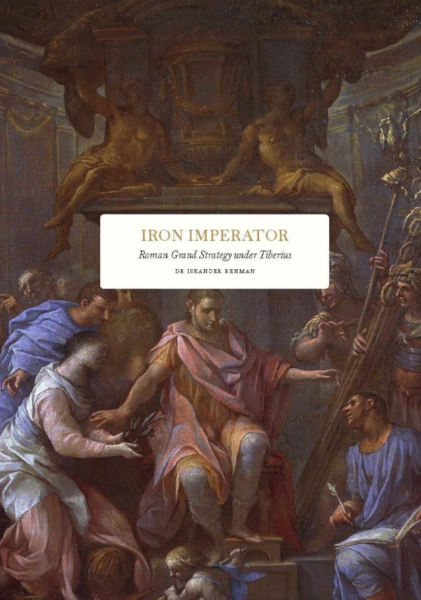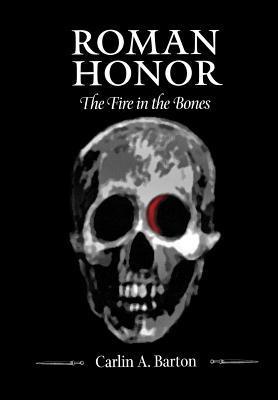 This vision of the collapse of Roman political authority in the West may seem a bit strange to readers who grew up on the popular narrative which still imagines the “Fall of Rome” as a great tide of “barbarians” sweeping over the empire destroying everything in their wake. It’s a vision that remains dominant in popular culture (indulged, for instance, in games like Total War: Attila; we’ve already talked about how strategy games in particular tend to embrace this a-historical annihilation-and-replacement model of conquest). But actually culture is one of the areas where the “change and continuity” crowd have their strongest arguments: finding evidence for continuity in late Roman culture into the early Middle Ages is almost trivially easy. The collapse of Roman authority did not mark a clean cultural break from the past, but rather another stage in a process of cultural fusion and assimilation which had been in process for some time.
This vision of the collapse of Roman political authority in the West may seem a bit strange to readers who grew up on the popular narrative which still imagines the “Fall of Rome” as a great tide of “barbarians” sweeping over the empire destroying everything in their wake. It’s a vision that remains dominant in popular culture (indulged, for instance, in games like Total War: Attila; we’ve already talked about how strategy games in particular tend to embrace this a-historical annihilation-and-replacement model of conquest). But actually culture is one of the areas where the “change and continuity” crowd have their strongest arguments: finding evidence for continuity in late Roman culture into the early Middle Ages is almost trivially easy. The collapse of Roman authority did not mark a clean cultural break from the past, but rather another stage in a process of cultural fusion and assimilation which had been in process for some time.
The first thing to remember, as we’ve already discussed, is that the population of the Roman Empire itself was hardly uniform. Rather the Roman empire as it violently expanded, had absorbed numerous peoples – Celtiberians, Iberians, Greeks, Gauls, Syrians, Egyptians, and on and on. Centuries of subsequent Roman rule had led to a process of cultural fusion, whereby those people began to think of themselves as Romani – Romans – as they both adopted previously Roman cultural elements and their Roman counterparts adopted provincial culture elements (like trousers!).
In particular, by the fifth century, the majority of these self-described Romani, including the overwhelming majority of elites, had already adopted a provincial religion: Christianity, which had in turn become the Roman religion and a core marker of Roman identity by the fifth century. Indeed, the word paganus, increasingly used in this period to refer to the remaining non-Christian population, had a root-meaning of something like “country bumpkin”, reflecting the degree to which for Roman elites and indeed many non-elites, the last fading vestiges of the old Greek and Roman religions were seen as out of touch. Of course Christianity itself came from the fringes of the Empire – a strange mystery cult from the troubled frontier province of Judaea in the Levant which had slowly grown until it had become the dominant religion of the empire, receiving official imperial favor and preference.
The arrival of the “barbarians” didn’t wipe away that fusion culture. With the exception of the Angles, Saxons and Jutes who eventually ended up in England, the new-comers almost uniformly learned the language of the Roman west – Latin – such that their descendants living in those lands, in a sense still speak it, in its modern forms: Spanish, French, Italian, Portuguese, etc. alongside more than a dozen local regional dialects. All are derived from Latin (and not, one might note, from the Germanic languages that the Goths, Vandals, Franks and so on would have been speaking when they crossed the Roman frontier).
They also adopted the Roman religion, Christianity. I suspect sometimes the popular imagination – especially the one that comes with those extraordinarily dumb “Christian dark age” graphs – is that when the “barbarians invade” the Romans were still chilling in their Greco-Roman temples, which the “barbarians” burned down. But quite to the contrary – the Romans were the ones shutting down the old pagan temples at the behest of the now Christian Roman emperors, who busied themselves building beautiful and marvelous churches (a point The Bright Ages makes very well in its first chapter).
The “barbarians” didn’t tear down those churches – they built more of them. There was some conflict here – many of the Germanic peoples who moved into the Roman Empire had been converted to Christianity before they did so (again, the Angles and Saxons are the exception here, converting after arrival), but many of them had been converted through a bishop, Ulfilias, from Constantinople who held to a branch of Christian belief called “Arianism” which was regarded as heretical by the Roman authorities. The “barbarians” were thus, at least initially, the wrong sort of Christian and this did cause friction in the fifth century, but by the end of the sixth century nearly all of these new kingdoms created in the wake of the collapse of Roman authority were not only Christian, but had converted to the officially accepted Roman “Chalcedonian” Christianity. We’ll come back later to the idea of the Church as an institution, but for now as a cultural marker, it was adopted by the “barbarians” with aplomb.
Artwork also sees the clear impact of cultural fusion. Often this transition is, I think, misunderstood by students whose knowledge of artwork essentially “skips” Late Antiquity, instead jumping directly from the veristic Roman artwork of the late republic and the idealizing artwork of the early empire directly to the heavily stylized artwork of Carolingian period and leads some to conclude that the fall of Rome made the artists “bad”. There are two problems: the decline here isn’t in quality and moreover the change didn’t happen with the fall of the Roman Empire but quite a bit earlier. […]
Late Roman artwork shows a clear shift into stylization, the representation of objects in a simplified, conventional way. You are likely familiar with many modern, highly developed stylized art forms; the example I use with my students is anime. Anime makes no effort at direct realism – the lines and shading of characters are intentionally simplified, but also bodies are intentionally drawn at the wrong proportions, with oversized faces and eyes and sometimes exaggerated facial expressions. That doesn’t mean it is bad art – all of that stylization is purposeful and requires considerable skill – the large faces, simple lines and big expressions allow animated characters to convey more emotion (at a minimum of animation budget).
Late Roman artwork moves the same way, shifting from efforts to portray individuals as real-to-life as possible (to the point where one can recognize early emperors by their facial features in sculpture, a task I had to be able to perform in some of my art-and-archaeology graduate courses) to efforts to portray an idealized version of a figure. No longer a specific emperor – though some identifying features might remain – but the idea of an emperor. Imperial bearing rendered into a person. That trend towards stylization continues into religious art in the early Middle Ages for the same reason: the figures – Jesus, Mary, saints, and so on – represent ideas as much as they do actual people and so they are drawn in a stylized way to serve as the pure expressions of their idealized nature. Not a person, but holiness, sainthood, charity, and so on.
And it really only takes a casual glance at the artwork I’ve been sprinkling through this section to see how early medieval artwork, even out through the Carolingians (c. 800 AD) owes a lot to late Roman artwork, but also builds on that artwork, particularly by bringing in artistic themes that seem to come from the new arrivals – the decorative twisting patterns and scroll-work which often display the considerable technical skill of an artist (seriously, try drawing some of that free-hand and you suddenly realize that graceful flowing lines in clear symmetrical patterns are actually really hard to render well).
All of the cultural fusion was effectively unavoidable. While we can’t know their population with any certainty, the “barbarians” migrating into the faltering western Empire who would eventually make up the ruling class of the new kingdoms emerging from its collapse seem fairly clearly to have been minorities in the lands they settled into (with the notable exception, again, of the Angles, Saxons and Jutes – as we’re going to see this pattern again and again, Britain has an unusual and rather more traumatic path through this period than much of the rest of Roman Europe). They were, to a significant degree, as Guy Halsall (op. cit.) notes, melting into a sea of Gallo-Romans, or Italo-Romans, or Ibero-Romans.
Even Bryan Ward-Perkins, one of the most vociferous members of the decline-and-fall camp, in his explosively titled The Fall of Rome and the End of Civilization (2005) – this is a book whose arguments we will come back to in some detail – is forced to concede that “even in Britain the incomers [sic] had not dispossessed everyone” of their land, but rather “the invaders entered the empire in groups that were small enough to leave plenty to share with the locals” (66-7). No vast replacement wave this, instead the new and old ended up side by side. Indeed, Odoacer, seizing control of Italy in 476, we are told, redistributed a third of the land; it’s unclear if this meant the land itself or the tax revenue on it, but in either case clearly the majority of the land remained in the hands of the locals which, by this point in the development of the Roman countryside, will have mostly meant in the hands of the local aristocracy.
Instead, as Ralph Mathisen documents in Roman aristocrats in barbarian Gaul: strategies for survival in an age of transition (1993), most of the old Roman aristocracy seems to have adapted to their changing rulers. As we’ll discuss next week, the vibrant local government of the early Roman empire had already substantially atrophied before the “barbarians” had even arrived, so for local notables who were rich but nevertheless lived below the sort of mega-wealth that could make one a player on the imperial stage, little real voice in government was lost when they traded a distant, unaccountable imperial government for a close-by, unaccountable “barbarian” one. Instead, as Mathisen notes, some of the Gallo-Roman elite retreat into their books and estates, while more are co-opted into the administration of these new breakaway kingdoms, who after all need literate administrators beyond what the “barbarians” can provide. Mathisen notes that in other cases, Gallo-Roman aristocrats with ambitions simply transferred those ambitions from the older imperial hierarchy to the newer ecclesiastical one; we’ll talk more about the church as an institution next week. Distinct in the fifth century, by the end of the sixth century in Gaul, the two aristocracies: the barbarian warrior-aristocracy and the Gallo-Roman civic aristocracy had melded into one, intermarried and sharing the same religion, values and culture.
In this sense there really is a very strong argument to be made that the “Romans” and indeed Roman culture never left Rome’s lost western provinces – the collapse of the political order did not bring with it the collapse of the Roman linguistic or cultural sphere, even if it did fragment it.
Bret Devereaux, “Collections: Rome: Decline and Fall? Part I: Words”, A Collection of Unmitigated Pedantry, 2022-01-14.







